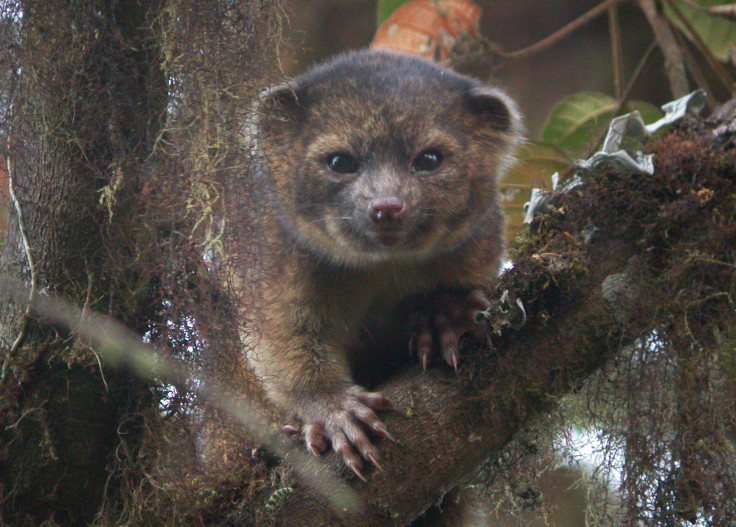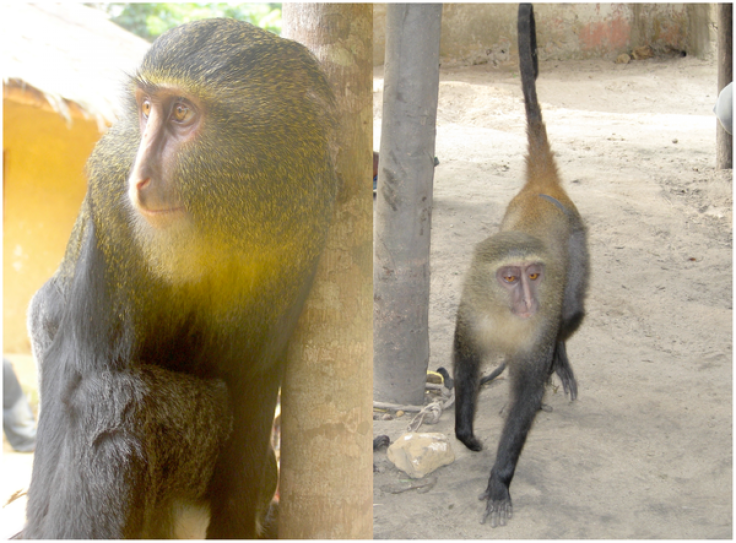New Species Found: The Teddy Bear-Like Olinguito, The Lesula And Several Other Recent Mammal Discoveries
A new mammal species, the olinguito, which many are describing as a cross between a cat and a teddy bear, was discovered by scientists after decades of misidentification. The olinguito is a tree dweller, native to the cloud forests of Ecuador and Colombia, that was mistakenly identified as an olingo, found in rainforests throughout Central and South America.

The new mammal species was discovered by Kristofer Helgen, curator of mammals at the Smithsonian National Museum of Natural History, and announced during a press conference in Washington D.C., the research was published in the journal ZooKeys.
The olinguito, Bassaricyon neblina, is a nocturnal carnivorous mammal that was well-known to scientists but under the wrong name. According to the Smithsonian, there were two dozen samples, fur and skulls, of the olinguito in various museums in the United States while several zoos housed the mammal in the 1960’s without realizing it was a new species.
Helgen was working on a project documenting known olingos when he discovered some unusual furs at the Chicago Field Museum. “They stopped me in my tracks—they weren't like any olingo that had been seen or described anywhere,” said Helgen about the furs. Olingos have gray fur and further examination of skull specimens led Helgen to believe there was a new mammal species. Helgen continued to examine olingo specimens housed in various museums and discovered more of the mystery fur with notes indicating they were found at an elevation, 5,000 to 9,000 feet above sea level, that was much higher than olingos are known to live.
With all the signs pointing to a new mammal species, Helgen, along with Roland Kays, from the North Carolina Museum of Natural Sciences and C. Miguel Pinto, from the American Museum of Natural History, set off to Ecuador’s Otonga Reserve to see if they could find the mystery mammal. Kays pointed out why the olinguito went undiscovered for so long saying, “When you go out and shine your light up into the trees, you basically just see clouds.”
The team was able to capture a living specimen and spent several years documenting the physical traits and characteristics of the new mammal species. According to Helgen, the olinguito is approximately 14 inches long and weighs just two pounds. The olinguito is a massive discovery as it is not only a carnivorous mammal its population is widespread enough there could be four subspecies of the new mammal, reports Smithsonian. Helgen said, “Honestly think that this could be the last time in history that we will turn up this kind of situation—both a new carnivore, and one that's widespread enough to have multiple kinds.”
As pointed out by the Smithsonian, discoveries of new species of insects or amphibians are common, new mammal species are much rarer.

The last carnivorous mammal species to be discovered prior to the olinguito was Durrell's vontsira, native to Madagascar and related to the brown-tailed mongoose, in 2010. Prior to the olinguito, the last carnivorous mammal species discovered in the Americas was the Colombian weasel, Mustela felipei, in 1978.
Another mammal discovery that went viral was in 2012 when the scientific community announced the discovery of the Lesula, Cercopithecus lomamiensis. The new species of monkey captured the Internet’s attention due to its strikingly human face.

In the past few years, several new mouse lemur species, including Gerp’s mouse lemur, have been discovered. Several other primates, in addition to the Lesula, have been discovered, such as the Myanmar snub-nosed monkey. In 2012, researchers discovered three new species of slow loris, the only venomous primate, in Borneo.
© Copyright IBTimes 2024. All rights reserved.












